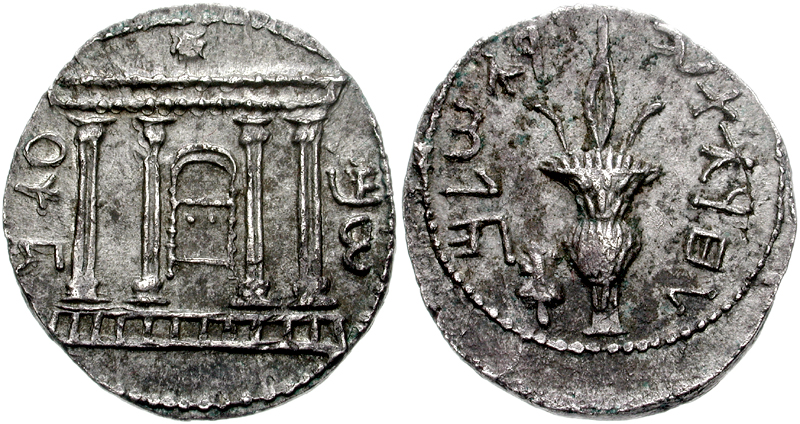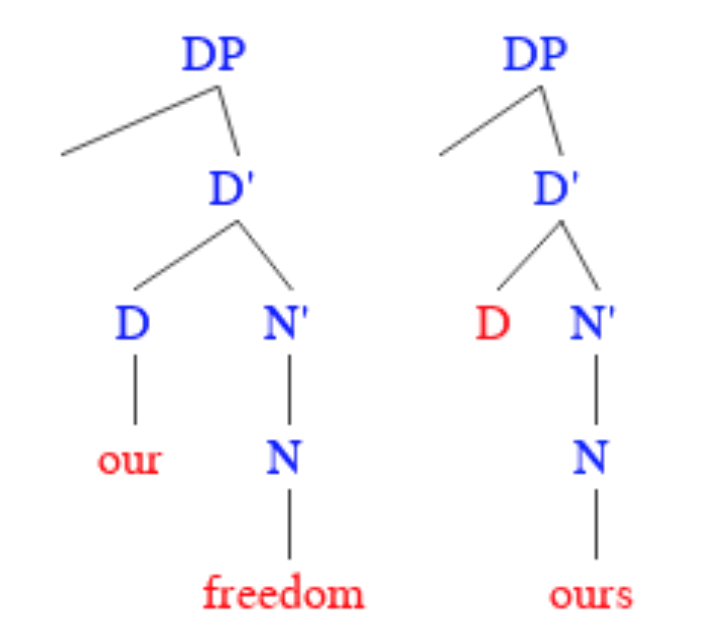|
Plurals
In many languages, a plural (sometimes abbreviated as pl., pl, , or ), is one of the values of the grammatical category of number. The plural of a noun typically denotes a quantity greater than the default quantity represented by that noun. This default quantity is most commonly one (a form that represents this default quantity of one is said to be of ''singular'' number). Therefore, plurals most typically denote two or more of something, although they may also denote fractional, zero or negative amounts. An example of a plural is the English word ''boys'', which corresponds to the singular ''boy''. Words of other types, such as verbs, adjectives and pronouns, also frequently have distinct plural forms, which are used in agreement with the number of their associated nouns. Some languages also have a dual (denoting exactly two of something) or other systems of number categories. However, in English and many other languages, singular and plural are the only grammatical numbers, ... [...More Info...] [...Related Items...] OR: [Wikipedia] [Google] [Baidu] |
Grammatical Number
In linguistics, grammatical number is a Feature (linguistics), feature of nouns, pronouns, adjectives and verb agreement (linguistics), agreement that expresses count distinctions (such as "one", "two" or "three or more"). English and many other languages present number categories of singular or plural. Some languages also have a Dual (grammatical number), dual, #Trial, trial and #Paucal, paucal number or other arrangements. The word "number" is also used in linguistics to describe the distinction between certain grammatical aspects that indicate the number of times an event occurs, such as the semelfactive aspect, the iterative aspect, etc. For that use of the term, see "Grammatical aspect". Overview Most languages of the world have formal means to express differences of number. One widespread distinction, found in English and many other languages, involves a simple two-way contrast between singular and plural number (''car''/''cars'', ''child''/''children'', etc.). Discussion ... [...More Info...] [...Related Items...] OR: [Wikipedia] [Google] [Baidu] |
Paucal
In linguistics, grammatical number is a feature of nouns, pronouns, adjectives and verb agreement that expresses count distinctions (such as "one", "two" or "three or more"). English and many other languages present number categories of singular or plural. Some languages also have a dual, trial and paucal number or other arrangements. The word "number" is also used in linguistics to describe the distinction between certain grammatical aspects that indicate the number of times an event occurs, such as the semelfactive aspect, the iterative aspect, etc. For that use of the term, see "Grammatical aspect". Overview Most languages of the world have formal means to express differences of number. One widespread distinction, found in English and many other languages, involves a simple two-way contrast between singular and plural number (''car''/''cars'', ''child''/''children'', etc.). Discussion of other more elaborate systems of number appears below. Grammatical number is a morph ... [...More Info...] [...Related Items...] OR: [Wikipedia] [Google] [Baidu] |
Grammatical Gender
In linguistics, a grammatical gender system is a specific form of a noun class system, where nouns are assigned to gender categories that are often not related to the real-world qualities of the entities denoted by those nouns. In languages with grammatical gender, most or all nouns inherently carry one value of the grammatical category called ''gender''. The values present in a given language, of which there are usually two or three, are called the ''genders'' of that language. Some authors use the term "grammatical gender" as a synonym of "noun class", whereas others use different definitions for each. Many authors prefer "noun classes" when none of the inflections in a language relate to Sex–gender distinction, sex or gender. According to one estimate, gender is used in approximately half of the world's languages. According to one definition: "Genders are classes of nouns reflected in the behavior of associated words." Overview Languages with grammatical gender usually h ... [...More Info...] [...Related Items...] OR: [Wikipedia] [Google] [Baidu] |
Dual (grammatical Number)
Dual ( abbreviated ) is a grammatical number that some languages use in addition to singular and plural. When a noun or pronoun appears in dual form, it is interpreted as referring to precisely two of the entities (objects or persons) identified by the noun or pronoun acting as a single unit or in unison. Verbs can also have dual agreement forms in these languages. The dual number existed in Proto-Indo-European and persisted in many of its descendants, such as Ancient Greek and Sanskrit, which have dual forms across nouns, verbs, and adjectives; Gothic, which used dual forms in pronouns and verbs; and Old English (Anglo-Saxon), which used dual forms in its pronouns. It can still be found in a few modern Indo-European languages such as Irish, Scottish Gaelic, Lithuanian, Slovene, and Sorbian languages. The majority of modern Indo-European languages, including modern English, have lost the dual number through their development. Its function has mostly been replaced by the s ... [...More Info...] [...Related Items...] OR: [Wikipedia] [Google] [Baidu] |
Personal Pronoun
Personal pronouns are pronouns that are associated primarily with a particular grammatical person – first person (as ''I''), second person (as ''you''), or third person (as ''he'', ''she'', ''it''). Personal pronouns may also take different forms depending on number (usually singular or plural), grammatical or natural gender, case, and formality. The term "personal" is used here purely to signify the grammatical sense; personal pronouns are not limited to people and can also refer to animals and objects (as the English personal pronoun ''it'' usually does). The re-use in some languages of one personal pronoun to indicate a second personal pronoun with formality or social distance – commonly a second person plural to signify second person singular formal – is known as the T–V distinction, from the Latin pronouns and . Examples are the majestic plural in English and the use of in place of in French. For specific details of the personal pronouns used in the Engli ... [...More Info...] [...Related Items...] OR: [Wikipedia] [Google] [Baidu] |
English Language
English is a West Germanic language that developed in early medieval England and has since become a English as a lingua franca, global lingua franca. The namesake of the language is the Angles (tribe), Angles, one of the Germanic peoples that Anglo-Saxon settlement of Britain, migrated to Britain after its End of Roman rule in Britain, Roman occupiers left. English is the list of languages by total number of speakers, most spoken language in the world, primarily due to the global influences of the former British Empire (succeeded by the Commonwealth of Nations) and the United States. English is the list of languages by number of native speakers, third-most spoken native language, after Mandarin Chinese and Spanish language, Spanish; it is also the most widely learned second language in the world, with more second-language speakers than native speakers. English is either the official language or one of the official languages in list of countries and territories where English ... [...More Info...] [...Related Items...] OR: [Wikipedia] [Google] [Baidu] |
Biblical Hebrew
Biblical Hebrew ( or ), also called Classical Hebrew, is an archaic form of the Hebrew language, a language in the Canaanite languages, Canaanitic branch of the Semitic languages spoken by the Israelites in the area known as the Land of Israel, roughly west of the Jordan River and east of the Mediterranean Sea. The term 'Hebrew' was not used for the language in the Hebrew Bible, which was referred to as 'language of Canaan' or 'Judean', but it was used in Koine Greek and Mishnaic Hebrew texts. The Hebrew language is attested in inscriptions from about the 10th century BCE, when it was almost identical to Phoenician language, Phoenician and other Canaanite languages, and spoken Hebrew persisted through and beyond the Second Temple period, which ended in 70 CE with the siege of Jerusalem (70 CE), siege of Jerusalem. It eventually developed into Mishnaic Hebrew, which was spoken until the 5th century. The language of the Hebrew Bible reflects various stages of ... [...More Info...] [...Related Items...] OR: [Wikipedia] [Google] [Baidu] |
Pronoun
In linguistics and grammar, a pronoun (Interlinear gloss, glossed ) is a word or a group of words that one may substitute for a noun or noun phrase. Pronouns have traditionally been regarded as one of the part of speech, parts of speech, but some modern theorists would not consider them to form a single class, in view of the variety of functions they perform cross-linguistically. An example of a pronoun is "you", which can be either singular or plural. Sub-types include personal pronoun, personal and possessive pronouns, reflexive pronoun, reflexive and reciprocal pronoun, reciprocal pronouns, demonstrative pronouns, relative pronoun, relative and interrogative pronouns, and indefinite pronouns. The use of pronouns often involves anaphora (linguistics), anaphora, where the meaning of the pronoun is dependent on an antecedent (grammar), antecedent. For example, in the sentence ''That poor man looks as if he needs a new coat'', the meaning of the pronoun ''he'' is dependent on its ... [...More Info...] [...Related Items...] OR: [Wikipedia] [Google] [Baidu] |
Singulative Number
In linguistics, singulative number and collective number (abbreviated and ) are terms used when the grammatical number for multiple items is the unmarked form of a noun, and the noun is specially marked to indicate a single item. This is the opposite of the more common singular–plural pattern, where a noun is unmarked when it represents one item, and is marked to represent more than one item. In some cases, a further distinction is made between the collective and what is known in some terminologies as the plurative, the former referencing multiple items as a class, the latter referencing them as individual units. Greenberg's linguistic universal #35 states that no language is purely singulative-collective in the sense that plural is always the null morpheme and singular is not. Examples Welsh Welsh has two systems of grammatical number, singular–plural and collective–singulative. Since the loss of the noun inflection system of earlier Celtic, plurals have become ... [...More Info...] [...Related Items...] OR: [Wikipedia] [Google] [Baidu] |
Noun
In grammar, a noun is a word that represents a concrete or abstract thing, like living creatures, places, actions, qualities, states of existence, and ideas. A noun may serve as an Object (grammar), object or Subject (grammar), subject within a phrase, clause, or sentence.Example nouns for: * Living creatures (including people, alive, dead, or imaginary): ''mushrooms, dogs, Afro-Caribbeans, rosebushes, Mandela, bacteria, Klingons'', etc. * Physical objects: ''hammers, pencils, Earth, guitars, atoms, stones, boots, shadows'', etc. * Places: ''closets, temples, rivers, Antarctica, houses, Uluru, utopia'', etc. * Actions of individuals or groups: ''swimming, exercises, cough, explosions, flight, electrification, embezzlement'', etc. * Physical qualities: ''colors, lengths, porosity, weights, roundness, symmetry, solidity,'' etc. * Mental or bodily states: ''jealousy, sleep, joy, headache, confusion'', etc. In linguistics, nouns constitute a lexical category (part of speech) defined ... [...More Info...] [...Related Items...] OR: [Wikipedia] [Google] [Baidu] |
Lihir Language
The Lihir language () is an Austronesian language spoken in the Lihir island group, in New Ireland Province, Papua New Guinea. It is notable for having five levels of grammatical number: singular, dual, trial, paucal and plural. It is questionable whether the trial is indeed trial or whether it is paucal, leaving there being a paucal and a greater paucal. Either way, this is the highest number of levels of grammatical number in any language. This distinction appears in both independent pronouns and possessor suffixes. There is some variation in pronunciation and orthography between the main island Niolam, and some of the smaller islands in the group. Name The name ''Lihir'' is an exonym An endonym (also known as autonym ) is a common, name for a group of people, individual person, geographical place, language, or dialect, meaning that it is used inside a particular group or linguistic community to identify or designate them ... from the related Patpatar language. Native ... [...More Info...] [...Related Items...] OR: [Wikipedia] [Google] [Baidu] |



